Mongolia II: From the Altai Mountains to the Southern Gobi
The time difference is playing havoc with my internal clock, I woke up and can't sleep anymore (it's in the middle of the night in Germany), which is why you're getting the second pic spam already. The Altai mountains cover a great deal of Mongolia, actually, but one particular part of them is between the Middle and the Southern Gobi, and that is where we went.
Here you can see them arise in the distance:
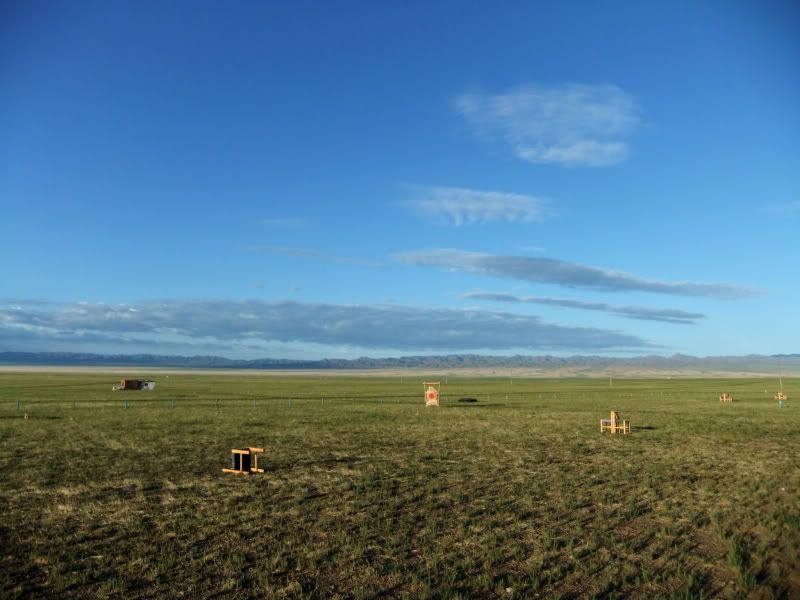
Closer:
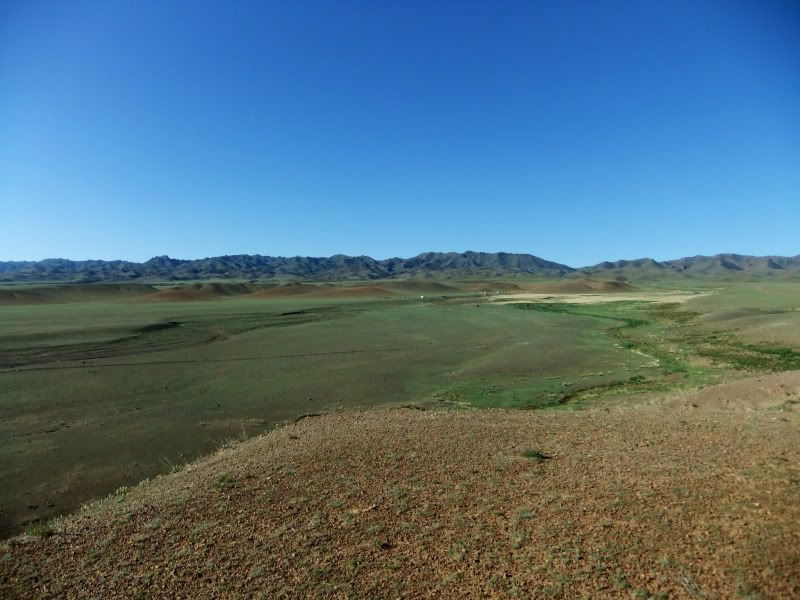
This is one of the better roads in Mongolia, incidentally:
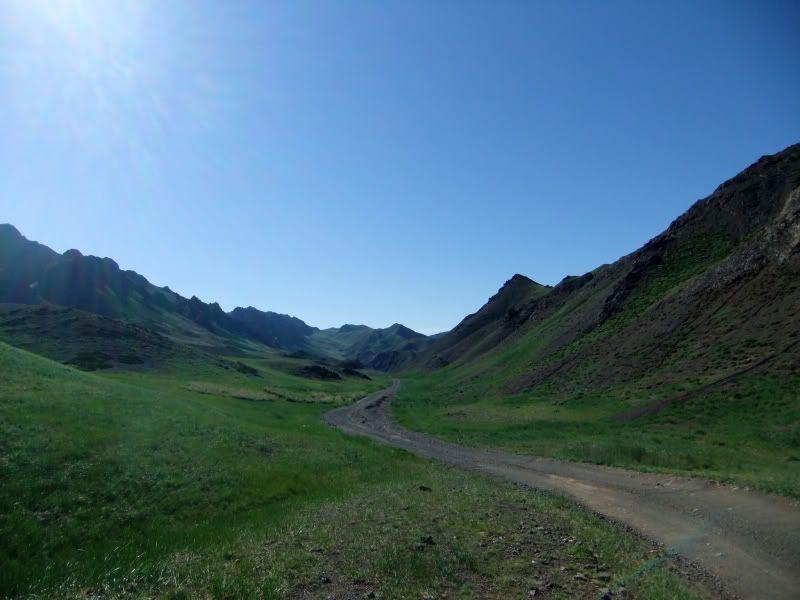
As in, you can actually see it. Our other ways of transportation could look like this:
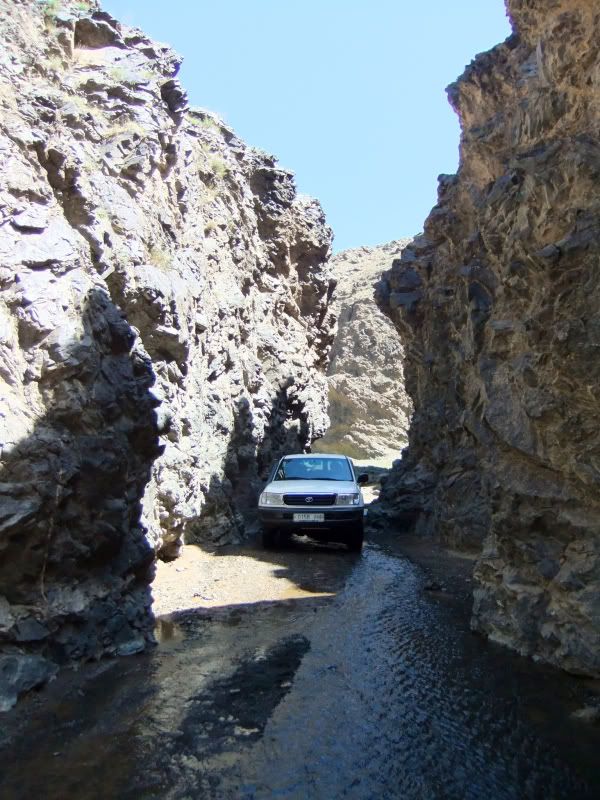
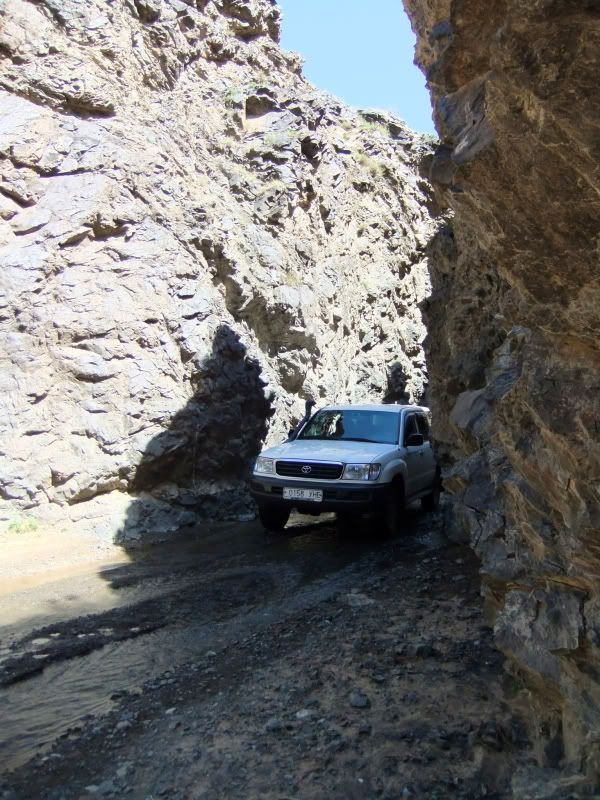
But so worth it. Here are spring bucks to say hello:
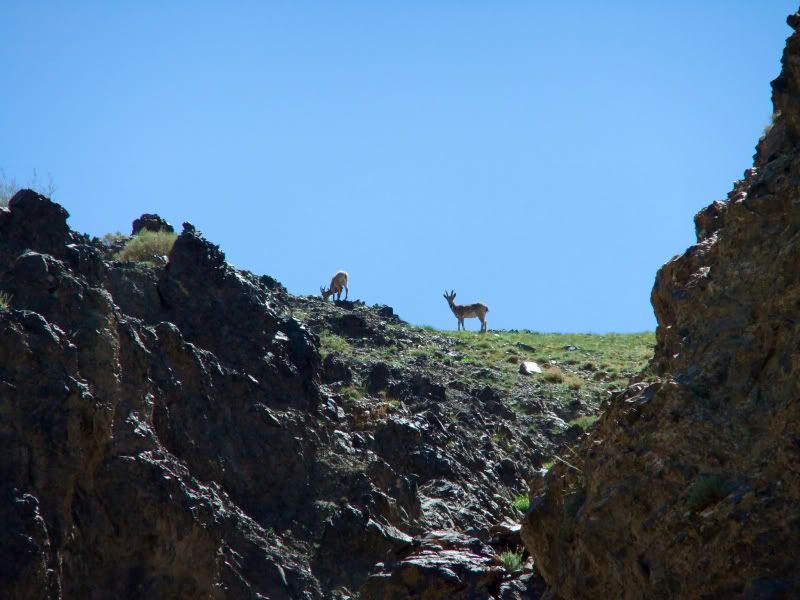
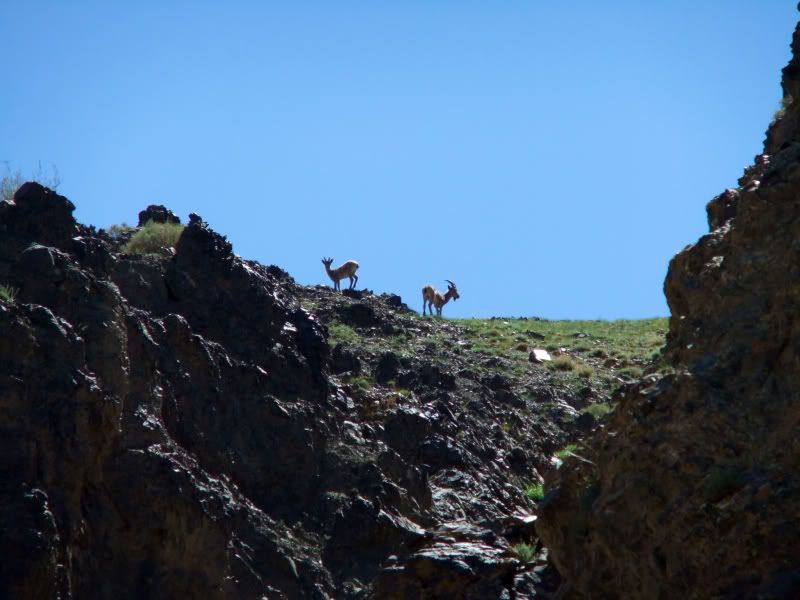
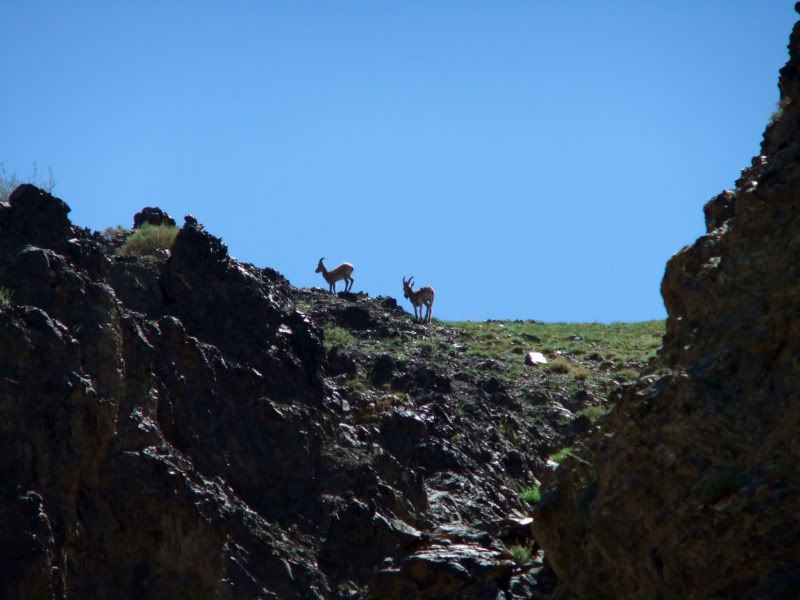
The one here, in the so called Valley of Vultures, is only visible if you enlarge the picture or squint:
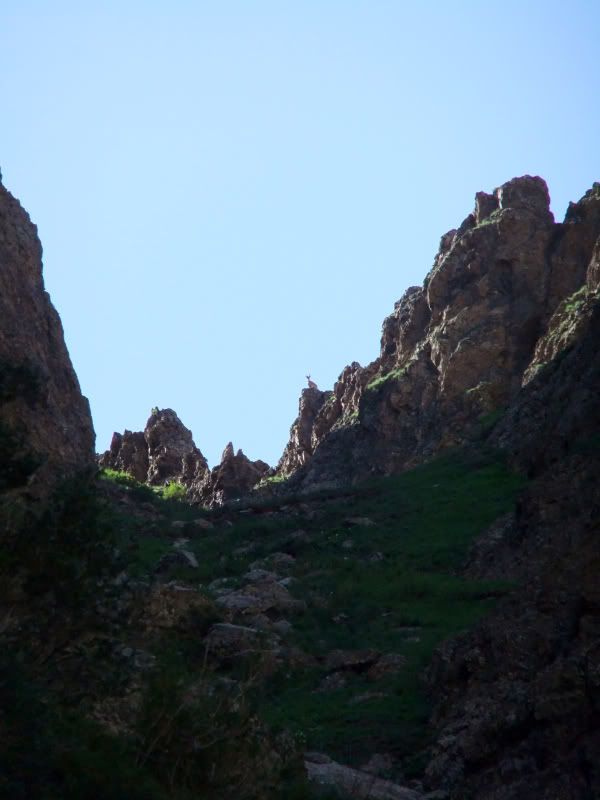
Now the special thing about the Valley of Vultures aren't really the vultures - though they are very present - but the fact there are areas where the sun never gets. There used to be gigantic blocks of eternal ice there, all through the year. Not anymore. There is a tiny bit of snow left each year in summer, and you can't just blame the climate change. When capitalism came, one of the local bosses had the ice hacked to store his food into it, I kid you not. What's left of it:
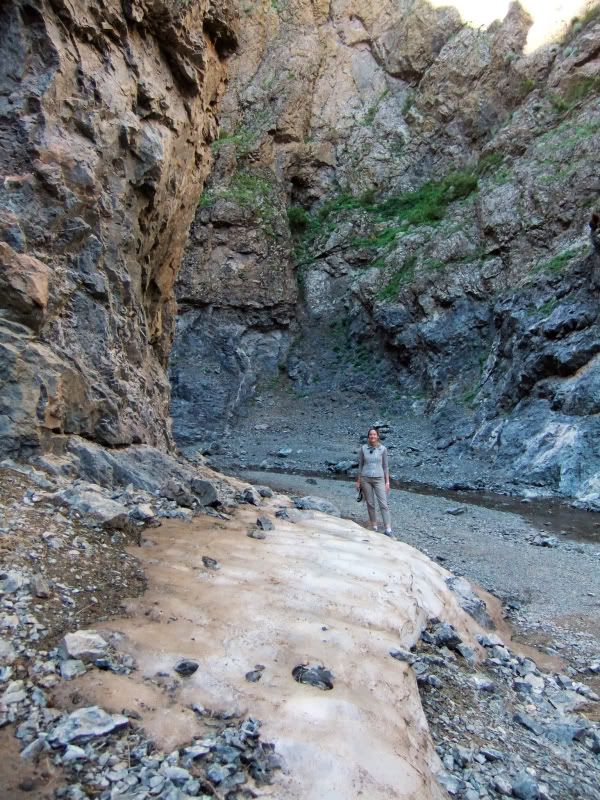
Ah well. The valley is still pretty:
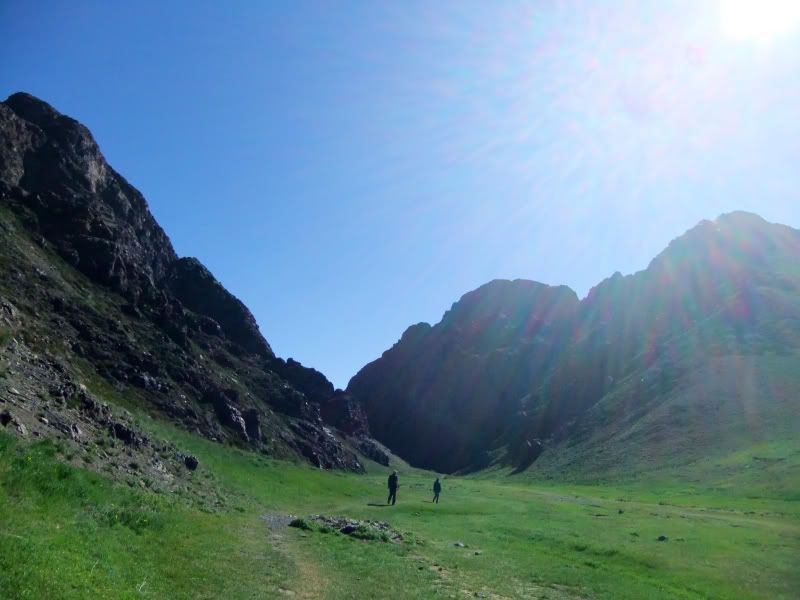
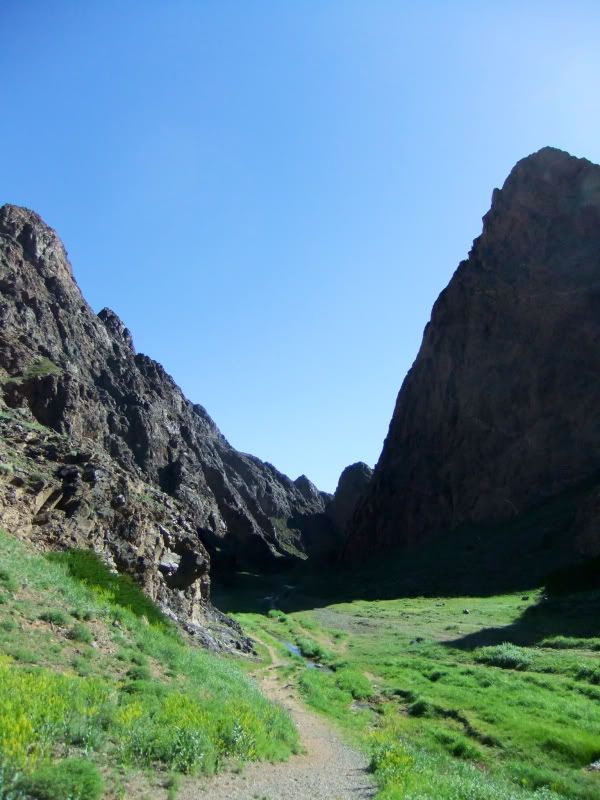
One of the locals. Mice and tiny, tiny bunnies are everywhere:
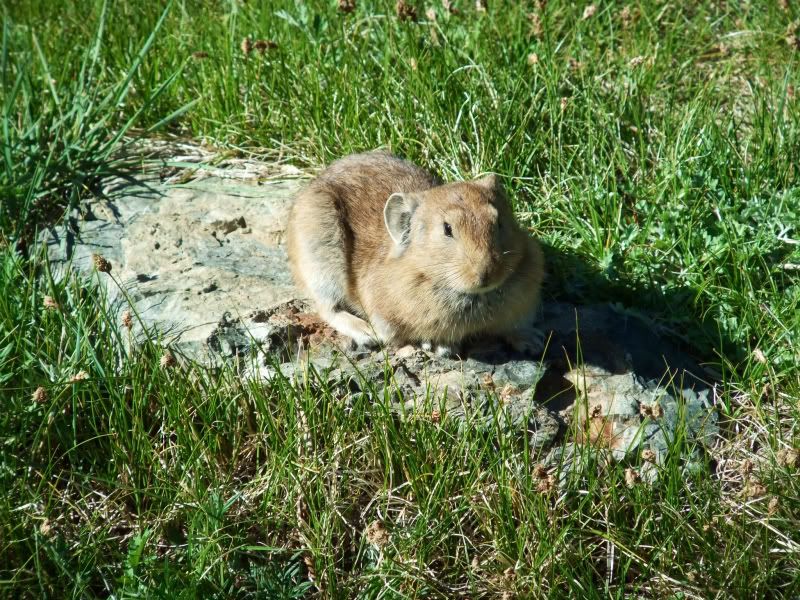
After this, we entered the Southern Gobi. Now I had my Aged Parent with me, who like me grew up with the German Sci Fi pulp series Perry Rhodan, and of course we remembered this is where the Stardust, the series' hero's space shuttle, lands after having made contact with aliens on the moon, and where later the capital of Earth, Terrania, is build. There is certainly room!
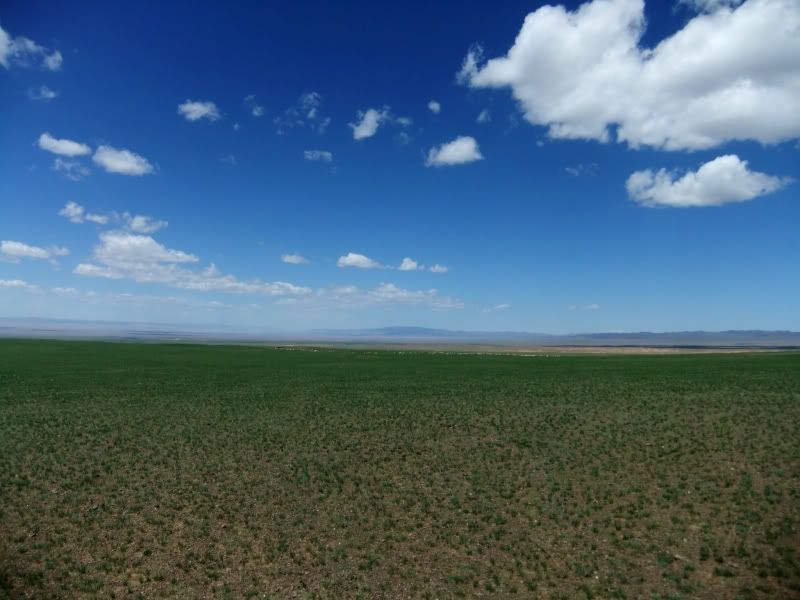
Here, you can see a typical desert "road", i.e. marks cars leave while driving through it:

In front of some of the Altai Mountains, there is a sand dune of about 120 kilometres length. A part of it is called the singing sand dune. Cue ominous music foreshadowing the impending demise of my camera:
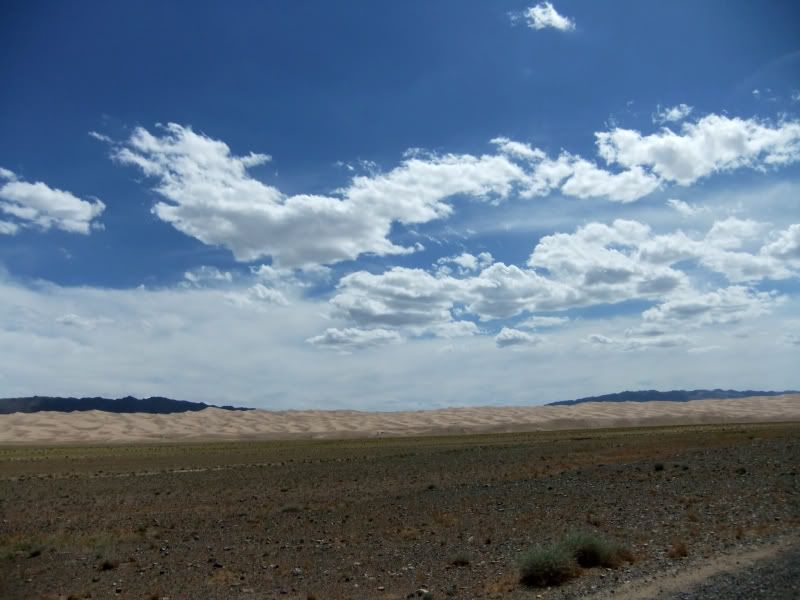
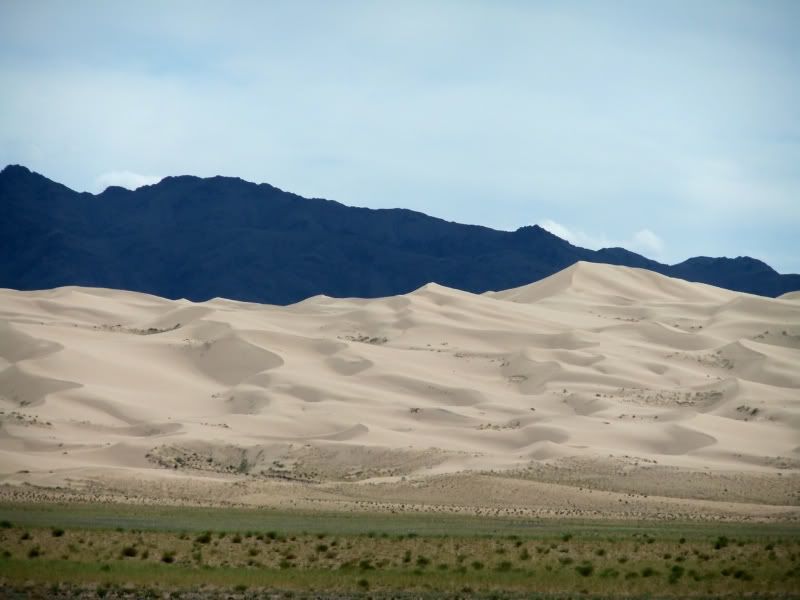
The culprit and camera murderer, but definitely impressive. Though I didn't hear it sing. You only do, supposedly, if you slide down again on your backside, and I walked:
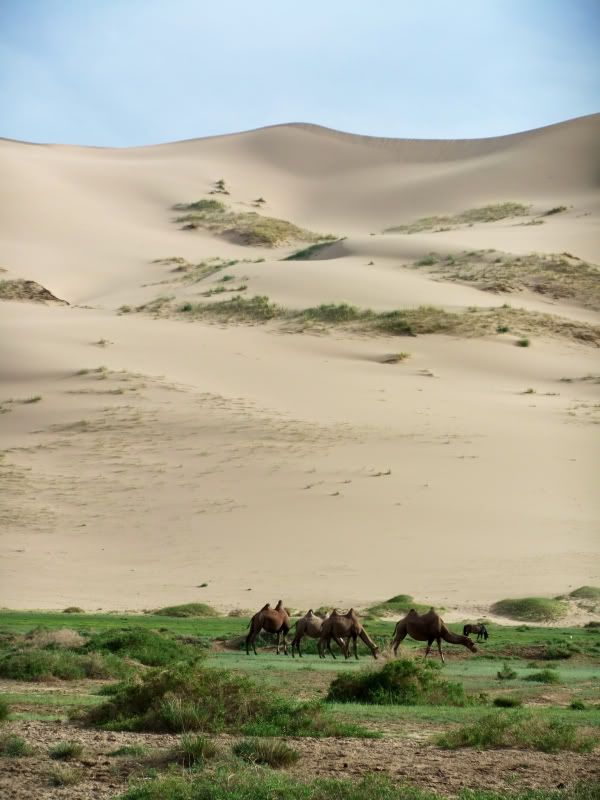
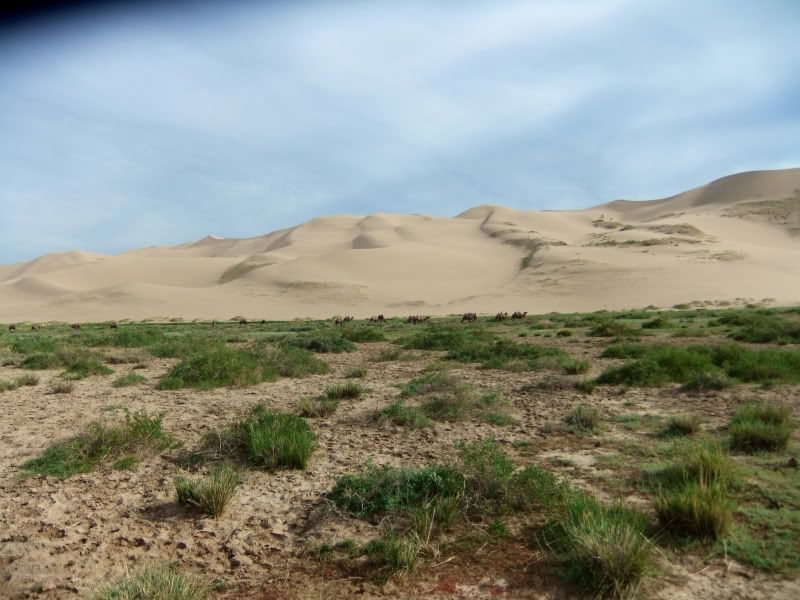
It may not look so to you, but walking up a giant sand dune is hard. You stumble and crawl more. Here it is seen from down below, straight up:
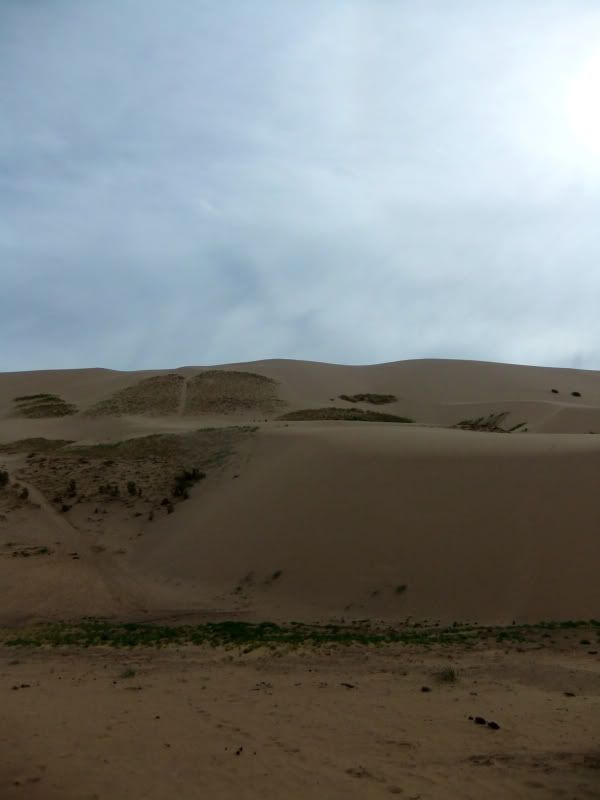
And this is half way through:
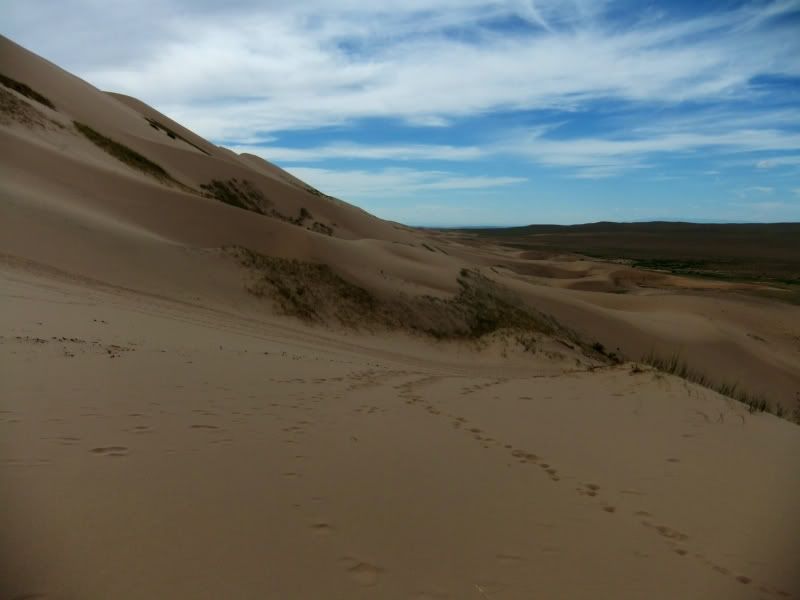
The view from the top:
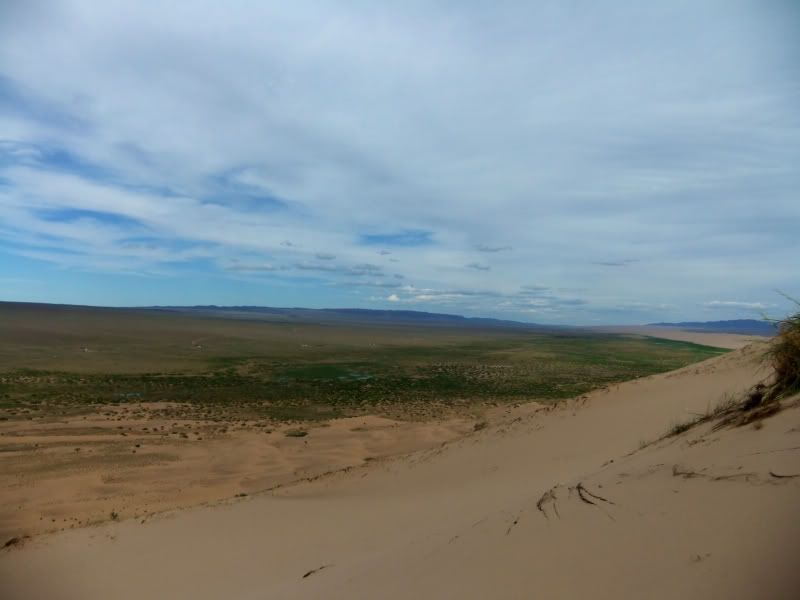
In other words, do not walk up there with your camera. Under any circumstances. For if you come down again, it will be done for. The tiny tiny sand particles, courtesy of the desert wind, will have offed it for good.
Meanwhile, in front of our Southern Gobi desert camp, there was a statue build which tells of a local legend. The camel originally had a magnificent pair of antlers. A deer asked to borrow it, promising to return them, and the camel, being a good natured animal, gave them away. It is still waiting at the water of every oasis for the deer to return them, moving its head to and thro in puzzled grief. The other reason I like this photo, one of the last my camera made before we went to the sand dune, is that you can see some real camels in the background, and also a Fata Morgana, which often happen in the Southern Gobi:
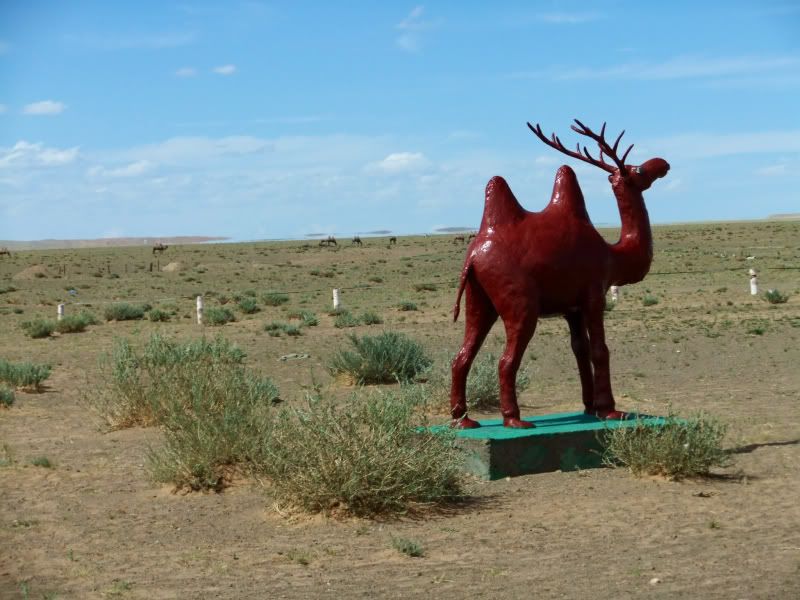
Speaking of that camp: like virtually every camp I was staying at, this one had a basketball basket which the local boys used enthusiastically. My Aged Parents decided to join in the evening:
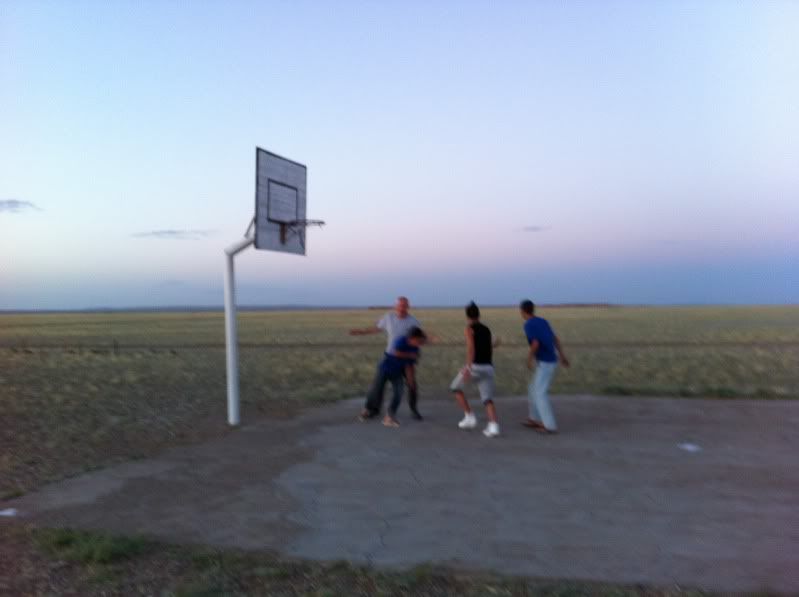
Why yes, that's a mobile phone photo. The rest are sharper, though. When we left the camp, some mare's milk was spread after us on our vehicle, for good fortune during the travel by this lady:
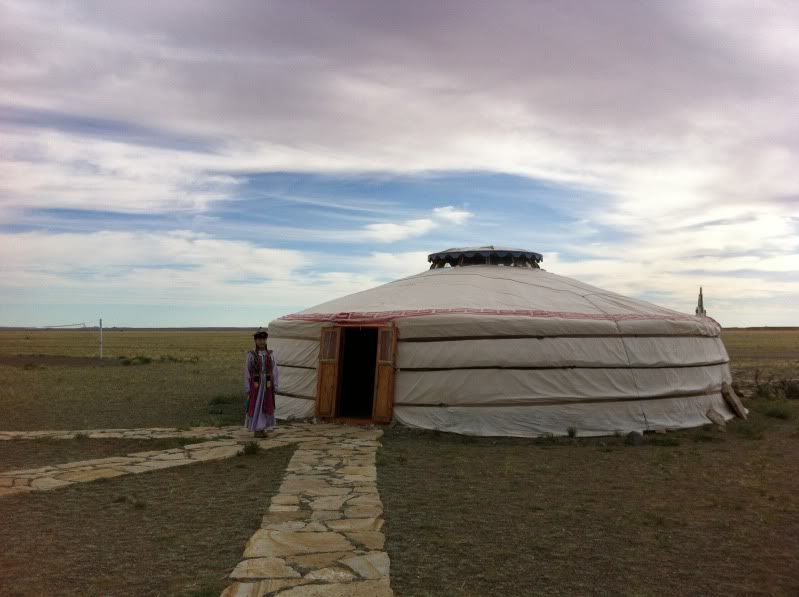
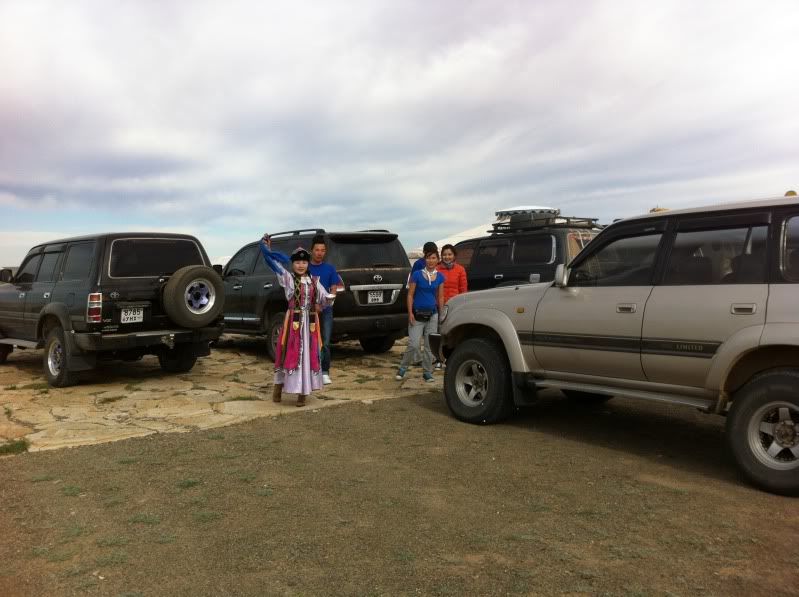
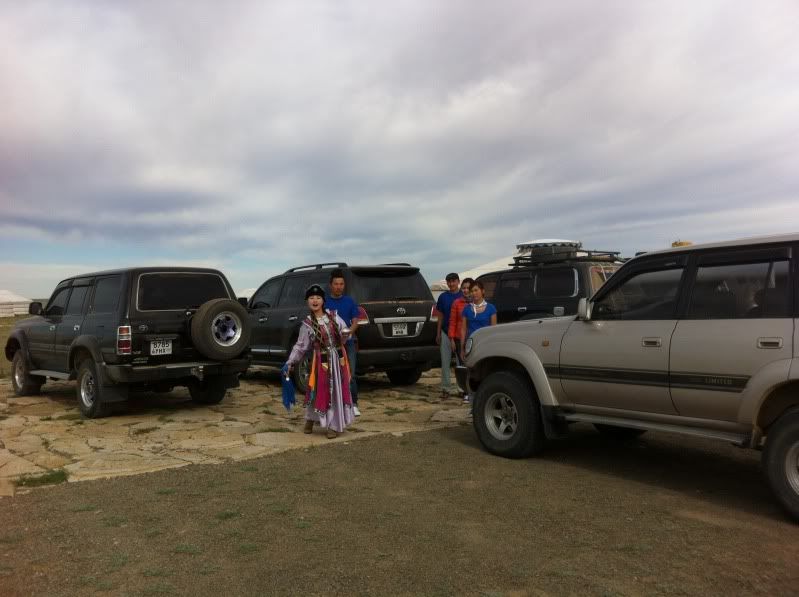
Another typical sight both in the mountains, the steppe and in the desert is the ovoo, pronounced "offo". It's made for prayer, and you can find little gifts around it, mostly sweets, milk and money.
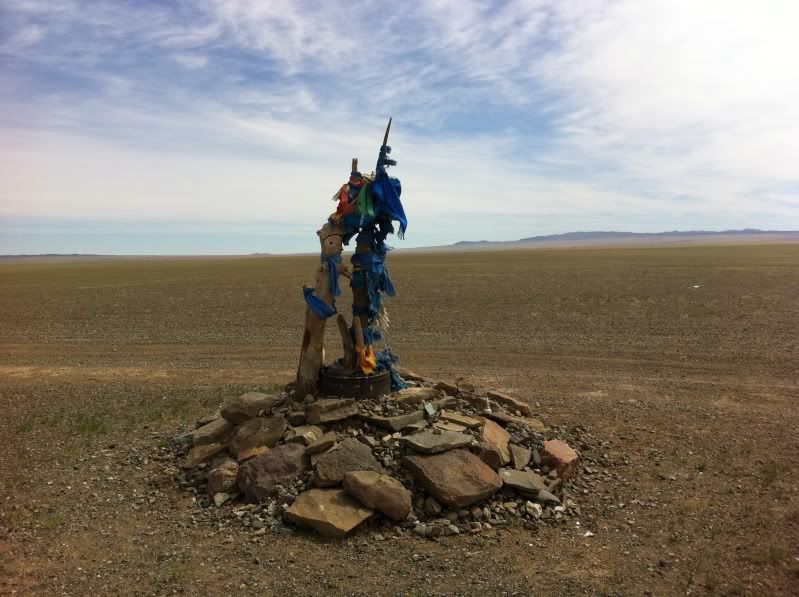
The Sauxal tree is the most valuable in the Gobi desert. You're not allowed to ax it, though you can collect its branches or itself when it's fallen down. They're great firewood and very very durable.
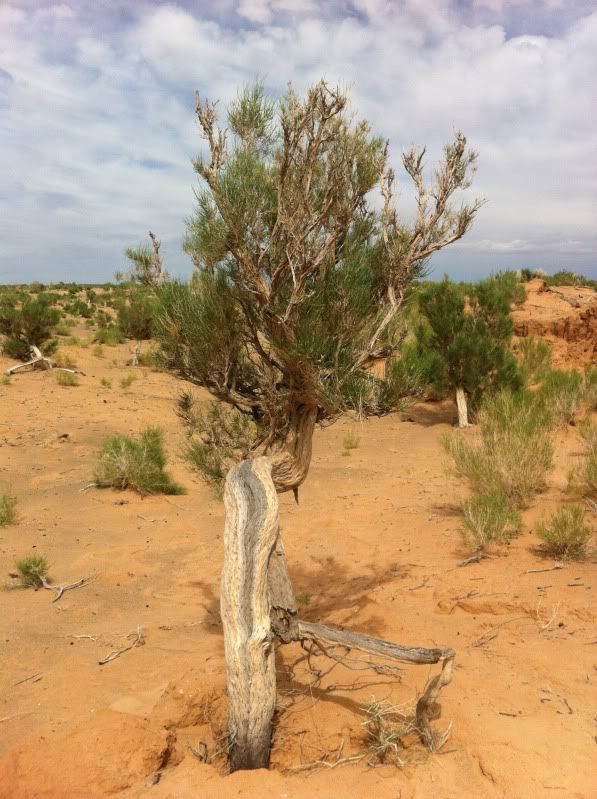
This is also the area where they found a lot of fossils and dinosaur skeletons, especially in the area referred to as the "Flaming Cliffs". One such skeleton was illegally sold to the US and returned when the whole thing was discovered, and now it's back in Mongolia. Mind you, by now a lot of locals have fun with the tourists by burying camel bones and then saying "look here, dinosaur bones"! I didn't spot them, but I did admire the sunset which gave the flaming cliffs their names:
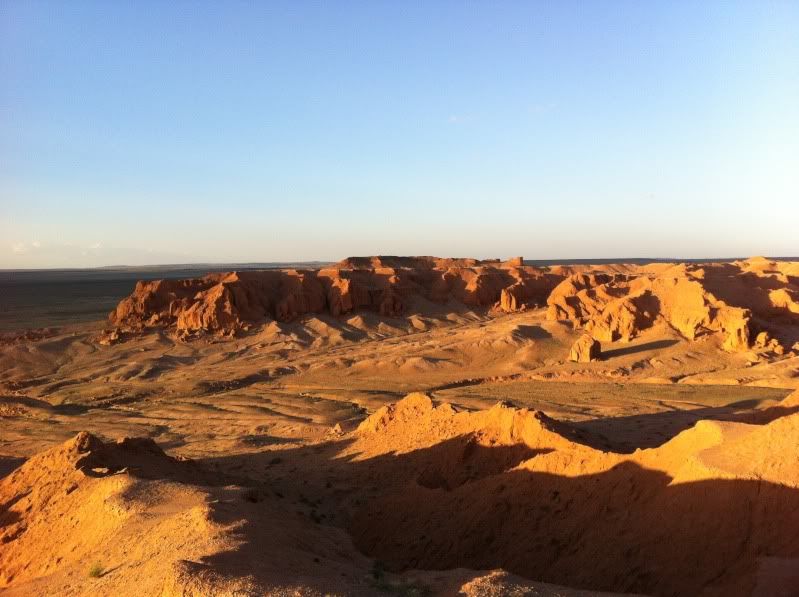
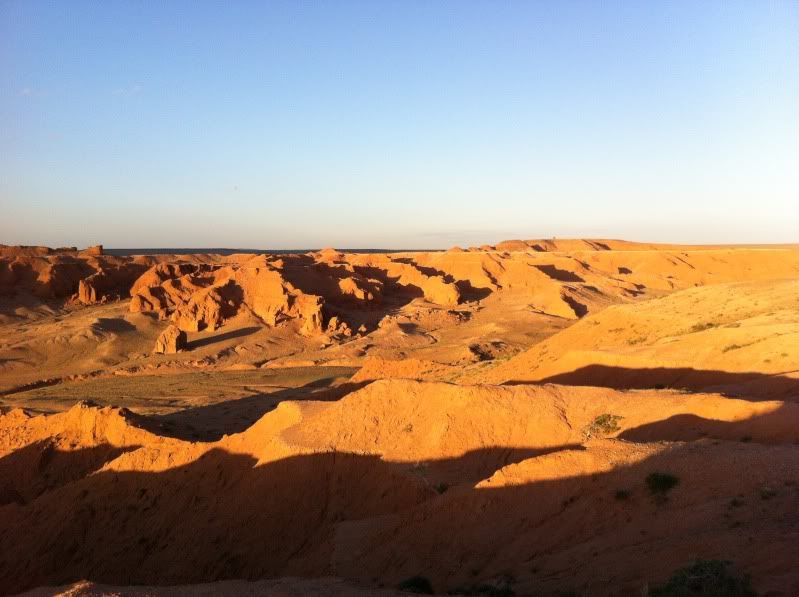

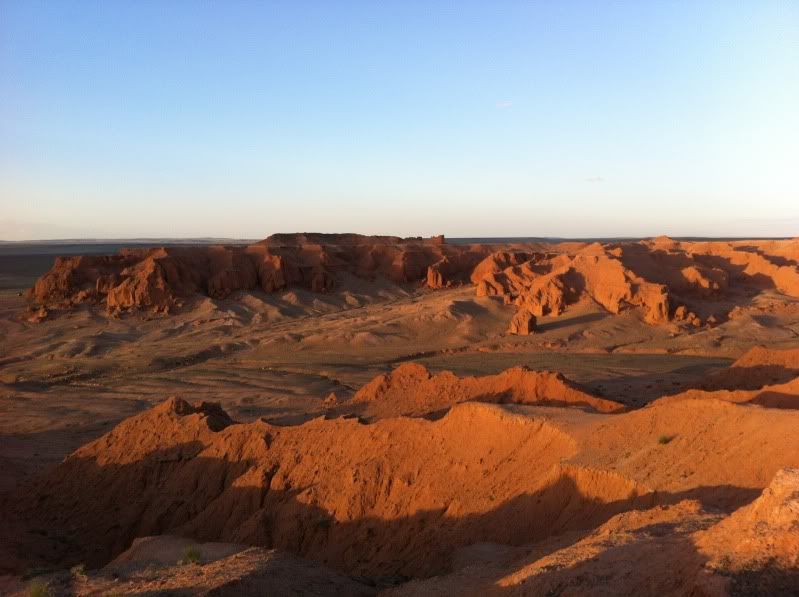
The nomads here live with a constant wind through the desert as their companion. Here are some more and their herds whom we talked to:
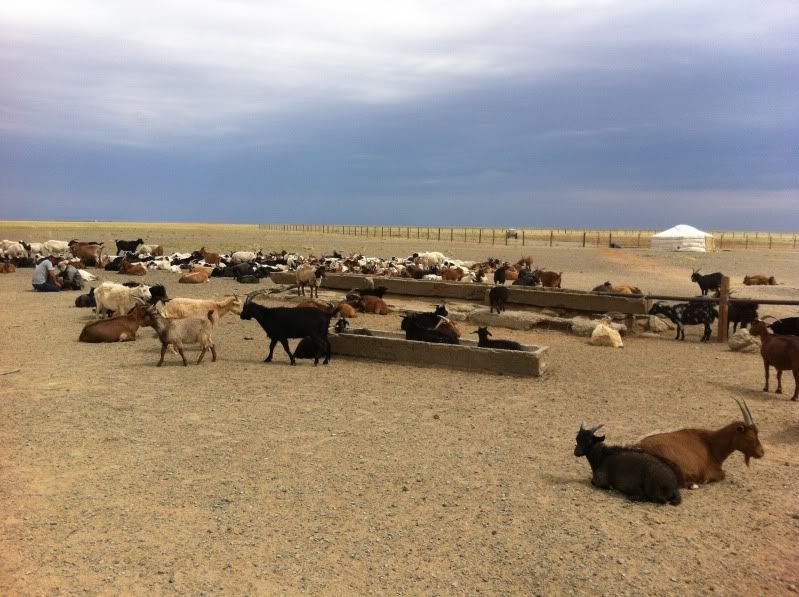
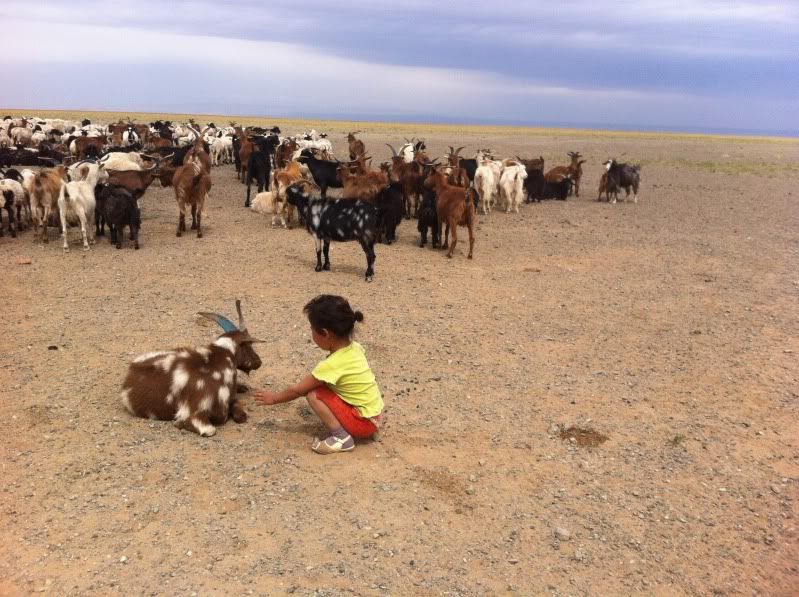
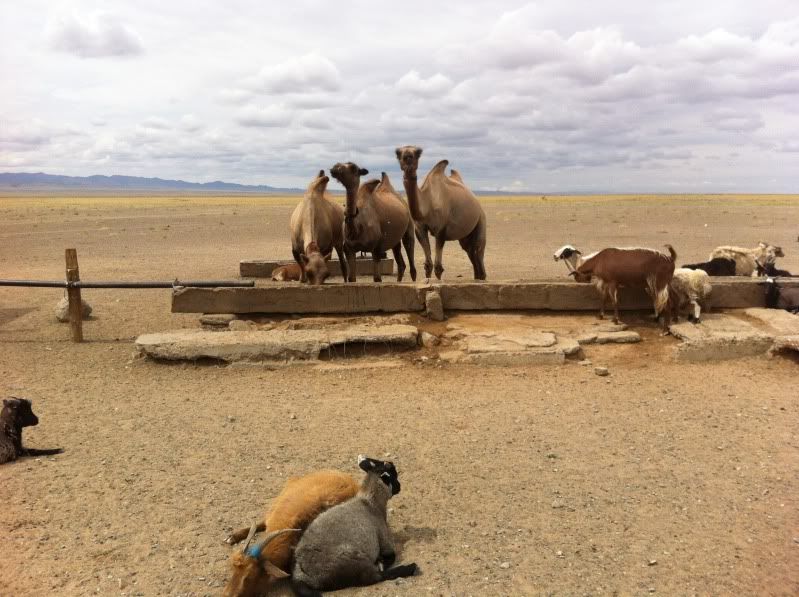
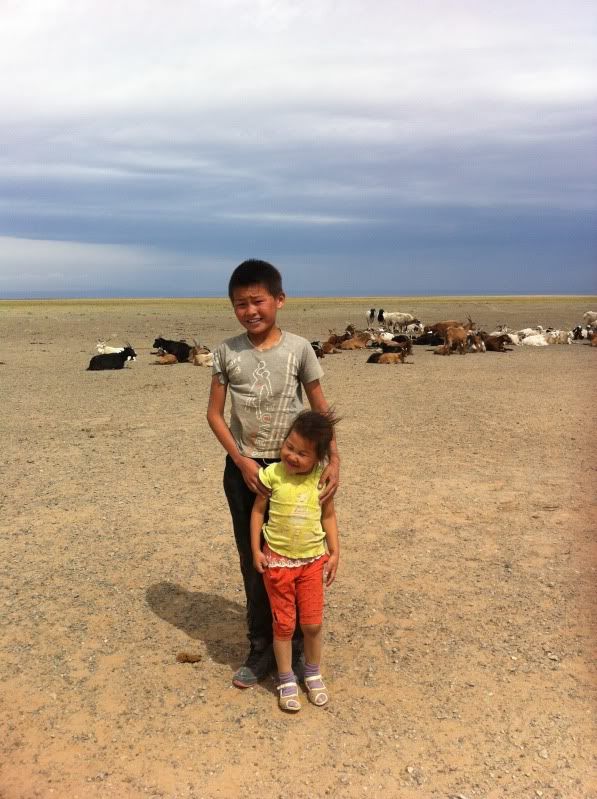
Sunset over the Southern Gobi:
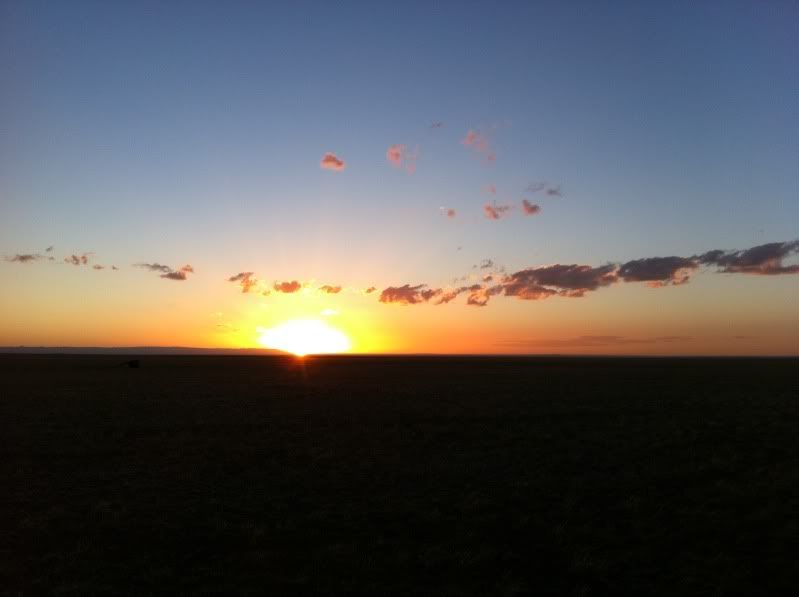
And with a picture of a ger we stayed in, I bid you good night, hoping to sleep again myself:

This entry was originally posted at http://selenak.dreamwidth.org/908245.html. Comment there or here, as you wish.
Here you can see them arise in the distance:

Closer:

This is one of the better roads in Mongolia, incidentally:

As in, you can actually see it. Our other ways of transportation could look like this:


But so worth it. Here are spring bucks to say hello:



The one here, in the so called Valley of Vultures, is only visible if you enlarge the picture or squint:

Now the special thing about the Valley of Vultures aren't really the vultures - though they are very present - but the fact there are areas where the sun never gets. There used to be gigantic blocks of eternal ice there, all through the year. Not anymore. There is a tiny bit of snow left each year in summer, and you can't just blame the climate change. When capitalism came, one of the local bosses had the ice hacked to store his food into it, I kid you not. What's left of it:

Ah well. The valley is still pretty:


One of the locals. Mice and tiny, tiny bunnies are everywhere:

After this, we entered the Southern Gobi. Now I had my Aged Parent with me, who like me grew up with the German Sci Fi pulp series Perry Rhodan, and of course we remembered this is where the Stardust, the series' hero's space shuttle, lands after having made contact with aliens on the moon, and where later the capital of Earth, Terrania, is build. There is certainly room!

Here, you can see a typical desert "road", i.e. marks cars leave while driving through it:

In front of some of the Altai Mountains, there is a sand dune of about 120 kilometres length. A part of it is called the singing sand dune. Cue ominous music foreshadowing the impending demise of my camera:


The culprit and camera murderer, but definitely impressive. Though I didn't hear it sing. You only do, supposedly, if you slide down again on your backside, and I walked:


It may not look so to you, but walking up a giant sand dune is hard. You stumble and crawl more. Here it is seen from down below, straight up:

And this is half way through:

The view from the top:

In other words, do not walk up there with your camera. Under any circumstances. For if you come down again, it will be done for. The tiny tiny sand particles, courtesy of the desert wind, will have offed it for good.
Meanwhile, in front of our Southern Gobi desert camp, there was a statue build which tells of a local legend. The camel originally had a magnificent pair of antlers. A deer asked to borrow it, promising to return them, and the camel, being a good natured animal, gave them away. It is still waiting at the water of every oasis for the deer to return them, moving its head to and thro in puzzled grief. The other reason I like this photo, one of the last my camera made before we went to the sand dune, is that you can see some real camels in the background, and also a Fata Morgana, which often happen in the Southern Gobi:

Speaking of that camp: like virtually every camp I was staying at, this one had a basketball basket which the local boys used enthusiastically. My Aged Parents decided to join in the evening:

Why yes, that's a mobile phone photo. The rest are sharper, though. When we left the camp, some mare's milk was spread after us on our vehicle, for good fortune during the travel by this lady:



Another typical sight both in the mountains, the steppe and in the desert is the ovoo, pronounced "offo". It's made for prayer, and you can find little gifts around it, mostly sweets, milk and money.

The Sauxal tree is the most valuable in the Gobi desert. You're not allowed to ax it, though you can collect its branches or itself when it's fallen down. They're great firewood and very very durable.

This is also the area where they found a lot of fossils and dinosaur skeletons, especially in the area referred to as the "Flaming Cliffs". One such skeleton was illegally sold to the US and returned when the whole thing was discovered, and now it's back in Mongolia. Mind you, by now a lot of locals have fun with the tourists by burying camel bones and then saying "look here, dinosaur bones"! I didn't spot them, but I did admire the sunset which gave the flaming cliffs their names:




The nomads here live with a constant wind through the desert as their companion. Here are some more and their herds whom we talked to:




Sunset over the Southern Gobi:

And with a picture of a ger we stayed in, I bid you good night, hoping to sleep again myself:

This entry was originally posted at http://selenak.dreamwidth.org/908245.html. Comment there or here, as you wish.